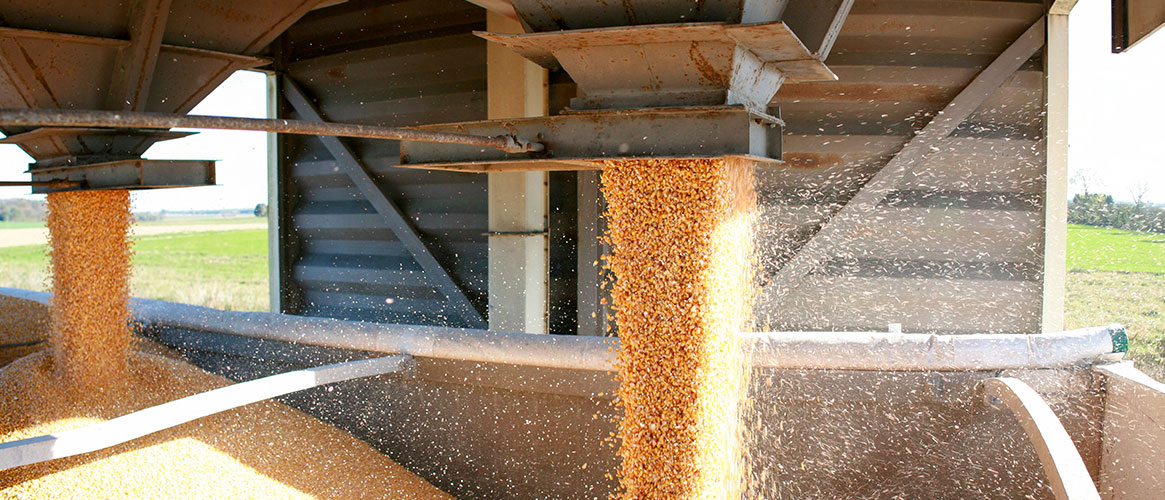Grain, feed, and other agricultural material storage is necessary, but handling these materials can pose a risk of engulfment, dangerous atmospheres, and contact with moving machinery to workers. Get training in grain hazards and confined spaces, lockout/tagout (LOTO) and respiratory protection. Be familiar with the equipment that you will drive and operate. Practice good housekeeping to maintain a safe work environment.
Flowing grain is the number one cause of fatalities for grain handlers. When in large or unstable quantities, grain can flow like water. If you are caught in a grain flow, you can be buried in 15-to-60 seconds. Unlike water, which allows you to swim, it is difficult or impossible to move if you are caught in grain. You can suffocate or “drown” in grain.
Prevention steps
The best prevention for grain engulfment is to know and avoid these potential situations. Flowing grain incidents can occur from loading and unloading trucks and bins, collapsing surface crusts, and collapsing steep or vertical grain piles. Proper grain storage is important, so use best practices and avoid creating steep piles. Do not enter a bin where grain is being drawn. Do not “walk-down” grain to help it flow. Do not walk on stored materials or “material bridges” because the surface crusts can collapse without warning.
Entanglement in grain handling machinery is the second leading cause of grain handler fatalities. Moving fans, blades, augers, power take-offs (PTOs), belts, gears, and pulleys can severely injure, disfigure, amputate, or cause death to unwary workers. Automatic equipment can come on suddenly and without warning.
Protective measures
Guarded equipment and safety interlock devices are designed to keep you away from mechanical hazards so never bypass or disable them. Never enter a bin when unloading equipment is running. Use lockout/tagout before you enter an area with moving machinery. Avoid areas with automatic equipment until the controls are locked out. Never clear jams or clogs while equipment is running. Avoid loose-fitting clothes, gloves, long hair, and jewelry that can get caught in moving machinery.
Breathing
Grain bins can have hazardous breathing environments due to the buildup of fumigants, dusts, molds, and toxins. Fermentation and decomposition can create harmful gases. Combustion byproducts can accumulate in storage areas. Good ventilation is important. Depending on the environment and the quality of the grain, consider air monitoring and/or a respirator before entering grain handling areas. Use rescue gear (harness and safety line), two observers, good communications methods, and a proper rescue plan before you enter a confined space.
Electrocution, fire, and explosions can occur in grain handling facilities due to dust and combustion sources. Control dust through good ventilation and housekeeping. Properly store all flammable materials. Maintain electrical equipment in good condition to prevent overheating. Use proper fuses, wiring, insulation, and grounding of equipment to prevent sparks. Monitor grain dryers and use thermostats and temperature limit switches so they do not overheat. Never smoke near dust sources or flammable materials such as gas, propane, and diesel.
